Violets are some of the most beloved and popular indoor plants. These bright and unusually beautiful flowers can be found in almost any room.
They have a huge variety of varieties, paintings, colors and leaves, thanks to which they can fit into any interior and decorate any room with their presence. To grow a violet is a dream of almost every crop, because this plant does not require special efforts to land and care, and in the end it will delight you with long and abundant flowering. Therefore, if you decide to purchase yourself a homemade violet, first of all you need to get acquainted with the nuances of growing this plant.
In this article we will look more detailed features and description of indoor violets, as well as the most common and popular varieties. We note all the most important nuances of agrotechnology growing violets on the windowsill.
Features and description of violets
The violet or sensipolia is an annual, biennial or many years of herbaceous plant, which belongs to the Gesnery family. This wonderful flower in nature prefers to grow in mountainous areas in Africa. Also violets can be found in subtropical and moderate latitudes of Asia, Europe, America and Australia. Due to such a latitude of distribution on the globe, indoor chumsows are simple in care, since the conditions for their cultivation are practically similar: moderately humid places.
The violets are grown in room conditions only in the 20th century and since then the breeders have brought a huge number of varieties affecting their appearance. The spread of this plant around the world was made possible after the opening of him by the Saint-Field scientist, in honor of which the violet was named - SENPOLIA. Although the first mention of this incredible flowering plant goes deep in centuries when they were decorated with various celebrations in ancient Rome and Egypt.
The appearance of violets on Earth is associated with the time of the Board of the Gods of Olympus. One young nymph asked help from Zeus to save her from the persecution of God Apollo. He cleared her over her and turned into an excellent violet, which hid in his possessions in the shade of trees, away from the solar rays of Apollo. Once the daughter of Zeus Proserpina walked through the forest. She noticed violets and narrowed to themselves a beautiful bouquet. However, at that moment, Pluto kidnapped her, from which Proserpina dropped a bouquet with violets to the ground. Since then, this wonderful flower has become distributed worldwide.
Description of violets:
- Violets are quite low, more often perennial, herbaceous flowering plants.
- Castic violet does not have a central stem.
- The flower is formed using short and pretty thick leaves, which are collected into the root rosette or are located alternately.
- Leaves in the form of oblong oval, edges slightly served. The color can be a light green or dark green shade, as well as spotted.
- In the heart of the rosette of the leaves, flowers are formed, which are solitary.
- Flowers are simple, depending on the variety can be different colors and shapes. Machings are found, semi-grade, ampel, fringe, with a cut or speck.
- Coloring is also very diverse. There are matches of monophonic, multicolored, with different color combinations: red, white, lilac, purple, blue, pink.
- With proper care and sufficient lighting, the violet can bloom over 10 months.
- After the filing of the flowers of violet appears a fruit, which has the form of a box with seeds is quite small size. Seeds can keep germination up to 2 years.
- Breeding violets at home is better to start with the most simple varieties to push the growing technique, since the rules for the whole family are the same, but they need to be obscurated.
Varieties of indoor violets, most popular varieties
To date, there is a rather complicated and confusing classification of violets, which is built on the shape and color of petals, on the form of leaves and the total plant size. Let us consider in more detail the most general classifications of violets.
Classification of violets in the form of flowers
- Shape of flowers "Pansies". This form of violet flowers is classic and most common. It is 5 petals, two of which are smaller and are located opposite to three large. It is this form that is characteristic of wild varieties of violets. The color can be different, from monophonic to multi-colored. Varieties: "Agnetta", "Maria-Silvia".
- Flower-star. This type of flower petals is absolutely symmetrical, have a shape of a pointed star. Flower is formed the same in size of petals that have grown to the middle. Varieties: "Angel Innocence".
- Flowers in the form of a bowl. Petals of this type of flowers are not completely disclosed, forming a bowl in the form of peonies. Sorts: "Spring Rose", "Reflections of Springs".
- Flowers-bells. Petals in such colors are composed in the form of bells and very much remind crocuses and snowdrops. Sorts: "ShcoLs Bells", "Alcemy Yellow Bells".
Classification of violets in color
- Classic monophonic violets. This group includes varieties with the colors of one shade: pink, white, red, blue, lilac. Also very often in this category of violets include two-tons, in which one color smoothly goes into another. Grade: "Pink Cadillac", "Rum Punch".
- Flowers with border. Very popular varieties of violets, a distinctive feature of which is the presence of a border on the edge of the petals. Kime can be a contrasting shade or same as the whole petal. Varieties: "Iceberg" with blue border on white petals, "Looking Glass" Red and green curios on pink petals.
- Fantasy flowers. This group is characterized by varieties of violets, which on one-photon petals have some drawing: peas, stains, strokes.
- Chimeras. Such flowers are the most expensive, they are very difficult to breed at home. They differ in the rays of contrasting color, which diverge on all petals from the center.
Classification of violets by type of petals
- Simple petals. Violets with such petals are the most common. These petals are fully open, framing a tiphinka.
- Scallop petals. Such flowers in the form of petals are a kind of intermediate view. The flower consists of one row of simple petals and a second consisting of several underdeveloped.
- Polish violets. The flower consists of two full-fledged rows of petals around an open stamech.
- Terry violets. These flowers consist of several rows of petals that completely close the stamens.
Popular varieties of viok
- Vittrtok variety. It is characterized by quite large colors, from 4 to 12 cm in diameter. Flowers are located singly, grow out of the outlet, consist of 5 petals. The color is different: white, red, black, with stains and strokes. The petals in form are also different: wavy, simple, fringe.
- Variety "Rosemary". This violet flowers resemble stars. In shape they are terry, all petals have a corrugated edge. It strikes the color of these colors: pink flowers with bright pink strokes and blue spots.
- Grade "Jan Caprice". This variety of violets A.Puminova has been bred. Immediately in the eyes rushes white foam of flowers, which consists of terry petals with greenish fringe along the edge.
- Mars grade. This variety of violets is characterized by a bright blue colors with a dark core.
- Sort "Jupiter". Flowers of such violets two-color. The bottom petals are purple, and the top is purely white.
- Grade "Fire Motillas". Beautiful and bright red or burgundy flowers. In the form of simple or semi-grade, with a corrugated edge and white border on the petals.
- Grade "Rose of Winds". Terry flowers with a fringe edge, a gentle pink shade. In some places, the fringe can become green.
Methods of breeding violets
The violets like many, but everyone immediately arises the question of how to grow violets at home. There is nothing difficult here. The violet is flowers that can be breeding on the windowsill in various ways. The most common and used to date are the following: breeding violet with leaf cuttings, steps, seeds and flowers. Experienced flowers are recommended at home to use two methods - sheet shifting and steaming or division.
Breeding violet leaf stalling
This is the main way to breed violets at home. It differs with almost 100% rooting, so more than the rest are recommended for use.
- On the parent plant, it is necessary to gently cut a healthy and strong leaf.
- Cut necessarily needed at an angle to increase the area of \u200b\u200bformation of roots.
- To root leaf cuttings in soil soil or into water.
- The soil can be purchased in a specialized store, you can also use peat tablet. Cutted cuttings must be rooted immediately, since at room temperature it can die. After landing, the cutlets require moderate watering and humidity. You should not cover the package, as the stalk can start rotting. You can use the glass. After some time, kids will appear on the cutting tree and the leaf will need to be carefully disconnected. With a good outcome, your new violet will bloom after a year.
- If you want to first give the plants to put the colliers and roots, then you need to put a cut-off leaf into the water.
- Water you need to boil in advance and add one tablet of activated carbon to it. Place the cuttings are needed into the room with a temperature of 20-24 degrees.
- With the help of such a way you can see the entire process of root growth and control it.
- After about 6-8 weeks of cuttings, the roots of the desired length will be allowed - 4-7 cm. In this case, they can be searched in separate containers.
- Fine plastic cups are well suited for transplant.
- It is important to remember that it is not necessary to change the temperature for young plants. Some time support greenhouse conditions.
Reproduction of stepsing
Only in this way hybrid violets and chimeras are multiplied, since when using another method, your violet is unlikely to inherit maternal signs.
- To separate the step, you need to choose a healthy and strong mother plant.
- It is also important that the stepper has at least three leaves.
- It is necessary to separate the stepper very carefully. It is better to use a sharp scalpel or awl. It is important not to injure the main outlet of the violet.
- For rooting, use soil soil or peat tablets.
- So that your stepper is faster to root, keep the container in greenhouse conditions for 3-4 weeks.
Landing violets at home
The cultivation of the laid room is not difficult. The main thing is to acquire high-quality planting material and comply with all the requirements for landing and care for homemade violet.
Selecting planting material
A high-quality and healthy planting material is the key to getting a beautiful and long-drying plant. Therefore, we assume to this process very seriously. It is best to acquire young violets in pots or cuttings in specialized stores or good acquaintances. When buying on the elementary markets, you risk getting not exactly what you wanted.
Basic rules for buying violets:
- Most often in stores offer Pretty adults commercial violets with bakery blossom. If you decide to buy exactly such a violet, remember that there is no guarantee that the next year it will also bloom. There is a chance that this violet can relax and die.
- Give preference to leaf cuttings. So you will get several plants at once.
- When choosing, also pay attention to the leaves of the plant. They should not be spots.
- The socket should not be too tight - this is a sign of the disease. Leaves should be light green.
- If the sheet cuttings are too stretched, it says about the lack of light. Therefore, this planting material is already weakened.
- It is best to purchase violets in the spring, since in winter and summer you will not be able to be confident in the state of the flower roots: they can be subporn or dried.
Selection of capacity and soil fitting for landing
- It is important to choose the proper tank for planting violets. The pot should not be too big, otherwise you will have to wait for flowering for a long time. The violet will fill all the free space roots and only after that will begin to bloom. It is optimal to use small plastic pots, the size of which will be about 2-3 times less than the nosette of violet.
- It is important to seriously take the choice and preparation of the soil mixture for planting violets. These delicate flowers prefer to grow on loose and nutritional soil. Soil mixture can be purchased in a specialized store, and you can do it yourself. To do this, mix the leafy ground, peat and river sand in proportion 5: 3: 1. It is also important to remember that violets prefer neutral or weakly acidic soil. At the bottom of the pot when landing, pour the drainage layer.
The process of planting violets at home
If you purchased the blooming bush of violets, then it is not necessary to transplant it into a new pot. Just before buying, check with the seller when the flower was rooted and he was transplanted. In any case, the young purchased plant takes some time to keep on quarantine
When buying a planting material in the form of a cutter, it is required to put it in a pot after rooting.
- At the bottom of the pot, pour a small layer of drainage in the form of pebbles or small pebbles. It is necessary to prevent water stagnation at the roots of the plant. From this violet can start rotting and eventually dies.
- Next, fall asleep prepared nutritional soil consisting of deciduous land, peat and sand.
- Also, when landing, you can add articles of superphosphate and wood ash.
- Sit down the rooted cutlets into the pot, neatly sprinkle the earth and water.
- The young plant needs to create suitable conditions for growth6 lighting, temperature, fertilizer, transplantation.
Features of growing and care for violets at home
How to care for violets, the question that needs to be considered before buying this beautiful flower. After all, it is from correctly and carefully care will depend on the growth and bloom of violets. If some conditions for their content can not be performed, then pick up simpler and unpretentious varieties.
Lighting and temperature
The main thing for the growth and bloom of violets to create them the optimal conditions of illumination and temperature.
- All violets, regardless of the variety, do not tolerate direct sunlight, as they leave on gentle leaves of burns.
- Optimal is the place with a large number of bright scattered light.
- It must be remembered that some varieties of violets need a long-term lighting day, for example, volatile violets. Therefore, they need to provide additional lighting with luminescent lamps. With the help of additionally lighting, all varieties of violets can be forced to bloom almost all year round.
- In the autumn-spring period, when the windowsill is cool, it is recommended to rearrange the pots with violets on racks to prevent hypothermia.
It is also important to observe the temperature regime for violets:
- For the normal growth of almost all violets, the optimal temperature is 20-22 degrees. With deviation in the large limit of the temperature regime, the violet may begin to hurt.
- The content of violets on the windowsill is accompanied by constant stress. The best place for them is racks. However, normalize temperature can be normalized by venting, pallets with water.
- Some varieties of violets require quite low temperatures. Popular violets beautifully bloom only at a temperature of 16-18 degrees.
Watering
An important stage is also the right watering of violets at home.
- Watering for violets should be moderate. Approximately enough will be twice a week.
- There are two ways of watering: upper and lower.
- At the bottom of the way, water must be poured neatly around the edge of the pot. This is not a very effective way, since the soil is moistened not evenly and there is a risk of getting water into the outlet of the leaves, from which they can start rotting.
- At lower irrigation, the pot needs to be put into the pallet with water, sometimes fertilizers add to ODU.
- Remember that it is necessary to water it necessary to moderately and use warm and dilated water for this.
- Sometimes you can spray plants and wipe the dirty leaves. With this procedure, remove the pot from the window sill.
Up. Palok
It is necessary to feed plants throughout the year. At the beginning of active growth, violet needed nitrogen-containing fertilizers. During the formation and dissipation of buds, the plant will need phosphorus-potash fertilizers. You can use "Kemira Lux".
Violets can be picked up by special fertilizers for these plants. They can be made once a week together with watering. The recommended dose must be reduced several times.
Transplanting viok
Adult violet or Senapolia need annual transfers and shifts of soil mixture. How to transplant violet correctly? Let's figure it out.
- Most often transplanted violets in the spring, but if you have additional lighting, you can transplanted flowers at any time.
- Before the transplant, pick the desired pot. Its diameter will depend on the diameter of the socket separated by three.
- Next to the bottom of the pot it is necessary to place a layer of drainage, which is needed to drive excess water from the roots. Drainage can be used pebbles or clay.
- Gently retake an adult plant.
- It is necessary to examine the root system for the presence of damaged roots. To consider it better, the violet can be washed.
- White roots are healthy, damaged are brown. They must be removed.
- Next, the plant is placed in the prepared pot and falling asleep by the soil mixture consisting of deciduous land, peat and sand. The lower leaves should only touch the Earth slightly.
Fighting diseases and pests
With incorrect care and no observance by watering mode, violet may be subject to the appearance of various diseases and pests.
Diseases of violets:
- Puffy dew. This disease most often amazes violets. The sign of pulse dews are whitish spots on the leaves of the plant. Fundazole is used to combat it.
- Phytoofluorosis. Pretty serious illness, when the appearance of which it is necessary to remove all the plant and disinfect the pot. It is manifested by brown stains on the foliage and leads to rotting roots.
- Gray rot. The sign of this plant is gray spots on any sites. When this disease is detected on the violet, the affected areas need to be removed, and the plant is to transplant into clean soil. In this case, the plant is treated with fungicide.
- Rust. The disease is manifested by brown-orange spots on the leaves. To combat it use a weak solution of copper mood.
Pests:
- Pliers. Very often found on violets. The sign of their appearance is a web and a trace-out. It is necessary to treat the plant with a special tool - acaricide.
- Shields. You can learn about the appearance of this pest at specific sticky stains on the leaves. Plants need to be treated by Agrantine.
- TRIPS. These pests spoil all the plant. When they appear, it is necessary to cut all the colors and treat the violet act.
The main thing is that you need to remember what to protect the plant from all diseases and pests, you need to follow all the rules for the care of these colors.
Additional care
- The plant periodically needs to turn to the bush grow beautiful and symmetrical.
- At adult violet need to remove old leaves.
- It is also important to remove the stunned flowers to stimulate the growth of new ones.
Observing all these simple rules of care for violets, you can get a healthy, strong and beautiful plant, which almost all year round will delight you with your lush flowering on the windowsill.

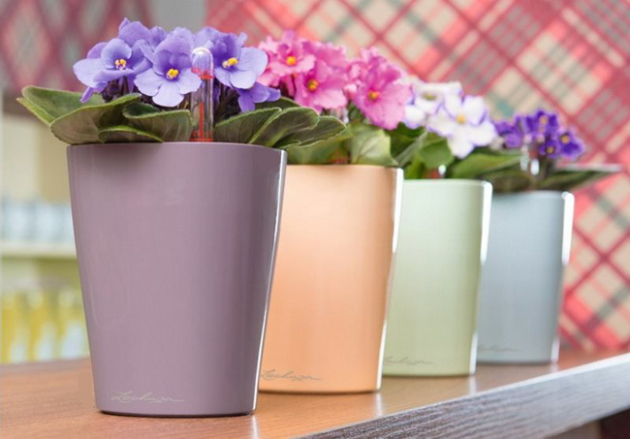

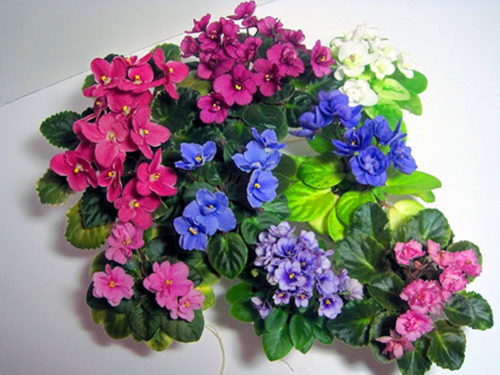
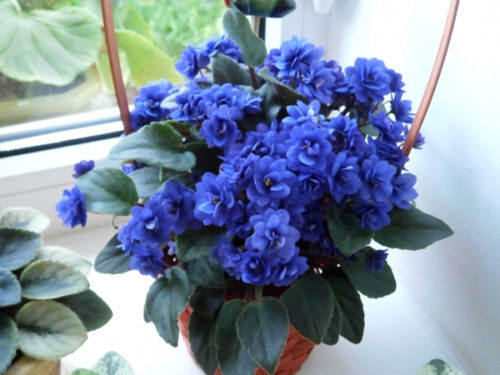
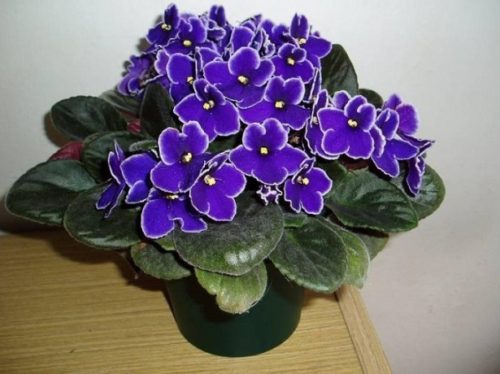
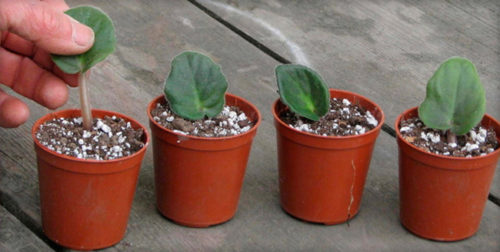
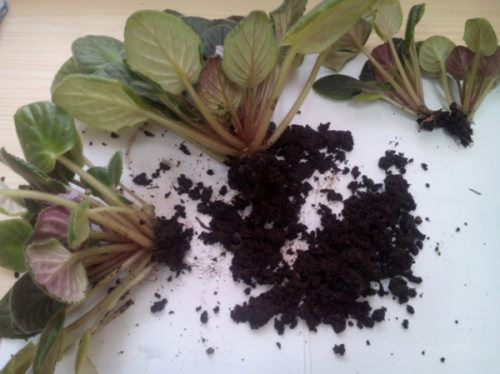
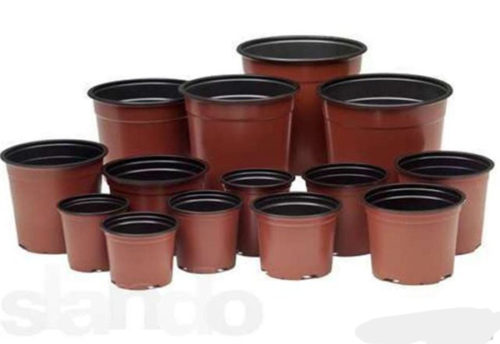
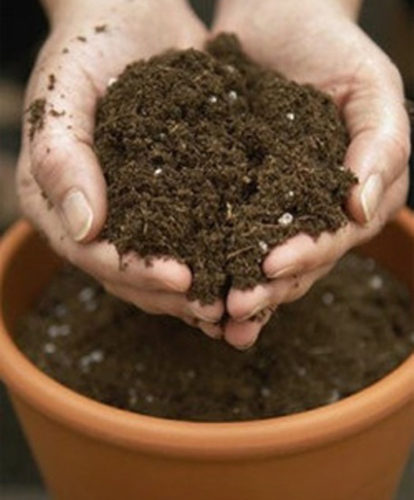
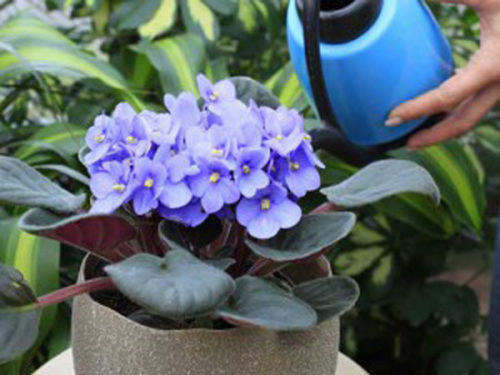
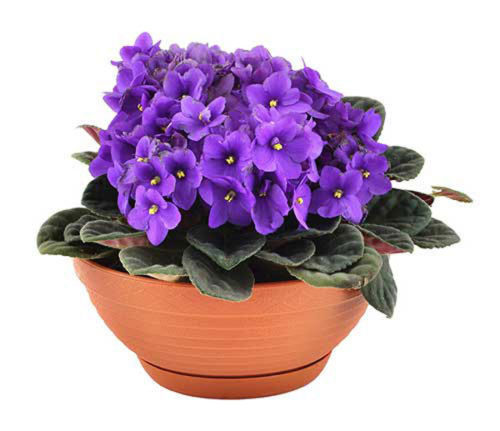












 Start a discussion ...
Start a discussion ...